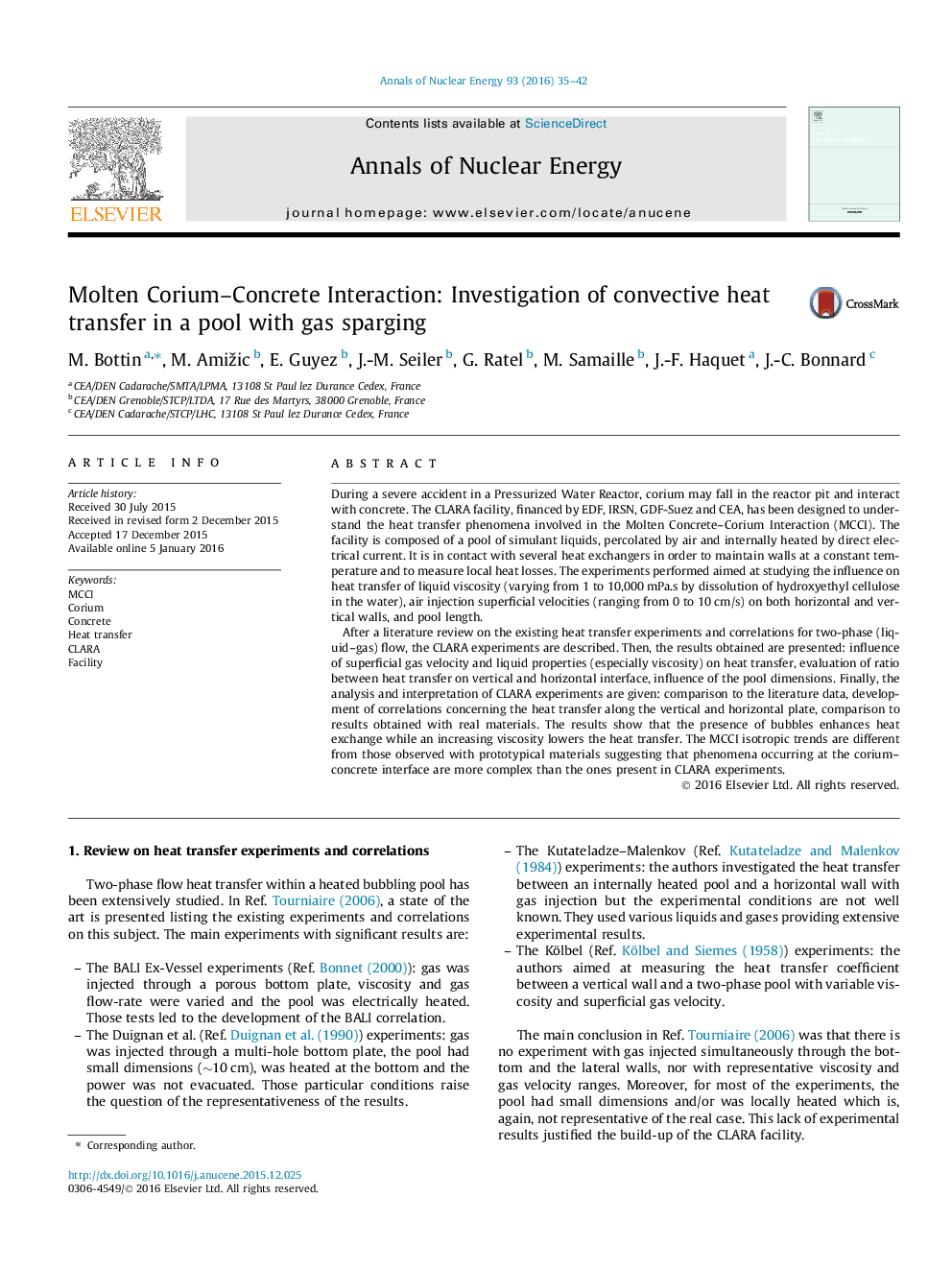| کد مقاله | کد نشریه | سال انتشار | مقاله انگلیسی | نسخه تمام متن |
|---|---|---|---|---|
| 1728036 | 1521104 | 2016 | 8 صفحه PDF | دانلود رایگان |

• Heat fluxes were measured in a heated pool with simulant materials and gas sparging.
• Experimental results showed that heat transfers are driven by local phenomena.
• New correlations, based on Deckwer’s semi-theoretical approach, were proposed.
• A better understanding of phenomena occurring at the corium–concrete interface is required.
During a severe accident in a Pressurized Water Reactor, corium may fall in the reactor pit and interact with concrete. The CLARA facility, financed by EDF, IRSN, GDF-Suez and CEA, has been designed to understand the heat transfer phenomena involved in the Molten Concrete–Corium Interaction (MCCI). The facility is composed of a pool of simulant liquids, percolated by air and internally heated by direct electrical current. It is in contact with several heat exchangers in order to maintain walls at a constant temperature and to measure local heat losses. The experiments performed aimed at studying the influence on heat transfer of liquid viscosity (varying from 1 to 10,000 mPa.s by dissolution of hydroxyethyl cellulose in the water), air injection superficial velocities (ranging from 0 to 10 cm/s) on both horizontal and vertical walls, and pool length.After a literature review on the existing heat transfer experiments and correlations for two-phase (liquid–gas) flow, the CLARA experiments are described. Then, the results obtained are presented: influence of superficial gas velocity and liquid properties (especially viscosity) on heat transfer, evaluation of ratio between heat transfer on vertical and horizontal interface, influence of the pool dimensions. Finally, the analysis and interpretation of CLARA experiments are given: comparison to the literature data, development of correlations concerning the heat transfer along the vertical and horizontal plate, comparison to results obtained with real materials. The results show that the presence of bubbles enhances heat exchange while an increasing viscosity lowers the heat transfer. The MCCI isotropic trends are different from those observed with prototypical materials suggesting that phenomena occurring at the corium–concrete interface are more complex than the ones present in CLARA experiments.
Journal: Annals of Nuclear Energy - Volume 93, July 2016, Pages 35–42